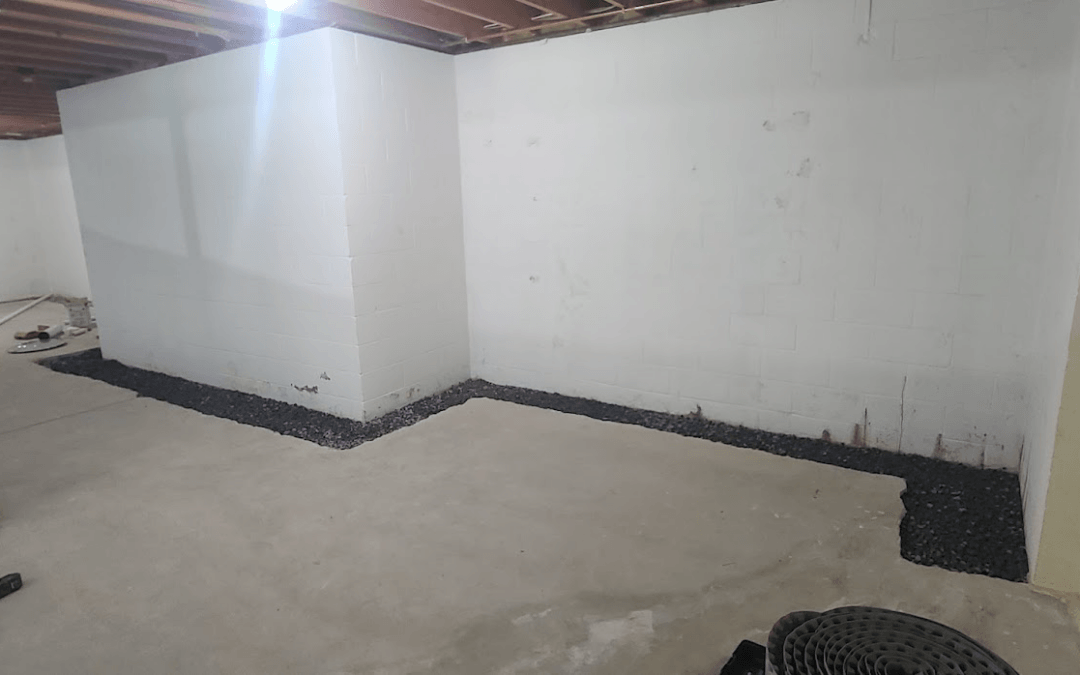Basement waterproofing is a critical investment for homeowners seeking to protect their properties from moisture infiltration, mold growth, and structural damage. With various methods available, choosing the right waterproofing approach can be daunting. In this article, we’ll explore some of the most popular basement waterproofing methods used in homes today, their benefits, and considerations for homeowners.
Interior Sealants and Waterproof Coatings:
Interior sealants and waterproof coatings are among the simplest and most cost-effective methods of basement waterproofing. These products are applied directly to the interior surfaces of basement walls and floors to create a barrier against moisture intrusion. Common options include waterproof paints, epoxy coatings, and cementitious sealants.
Benefits:
- Easy application: Interior sealants and coatings can be applied quickly and with minimal disruption to the home.
- Cost-effective: Compared to exterior waterproofing methods, interior sealants are generally more affordable.
- Improves aesthetics: Waterproof coatings can enhance the appearance of basement walls and floors while protecting against moisture.
Considerations:
- Not suitable for severe water infiltration: Interior sealants are best suited for minor moisture issues and may not provide adequate protection against significant water infiltration.
- Surface preparation required: Proper surface preparation, including cleaning and repairing cracks, is essential for the effectiveness of sealants and coatings.
- May require periodic maintenance: Sealants and coatings may need to be reapplied periodically to maintain their effectiveness.
Interior Drainage Systems:
Interior drainage systems are designed to manage groundwater and surface water that enters the basement. These systems typically consist of a network of pipes, drains, and sump pumps installed along the interior perimeter of the basement.
Benefits:
- Effective water management: Interior drainage systems collect and channel water away from the foundation, preventing it from seeping into the basement.
- Helps alleviate hydrostatic pressure: By removing excess water from the soil surrounding the foundation, interior drainage systems help reduce hydrostatic pressure, which can lead to foundation damage.
- Versatile: Interior drainage systems can be installed in both finished and unfinished basements and are suitable for a wide range of foundation types.
Considerations:
- Professional installation required: Installing an interior drainage system requires specialized knowledge and equipment, making professional installation necessary.
- Regular maintenance: Interior drainage systems should be inspected and maintained regularly to ensure proper functioning and prevent clogs or blockages.
- May not address underlying issues: While interior drainage systems are effective at managing water infiltration, they do not address the underlying causes of moisture problems, such as poor exterior drainage or foundation cracks.
Exterior Waterproofing:
Exterior waterproofing is considered one of the most effective methods of basement waterproofing, as it prevents water from reaching the foundation walls in the first place. This approach typically involves excavating the soil around the foundation, applying a waterproof membrane or coating to the exterior walls, and installing a drainage system to redirect water away from the foundation.
Benefits:
- Provides comprehensive protection: Exterior waterproofing creates a barrier against water infiltration, addressing the root causes of moisture problems and preventing damage to the foundation.
- Long-lasting results: Properly installed exterior waterproofing systems can provide decades of reliable protection against water intrusion.
- Helps preserve property value: Basement waterproofing enhances the structural integrity and livability of the home, which can increase its resale value.
Considerations:
- Disruptive installation process: Exterior waterproofing requires excavation around the foundation, which can be labor-intensive and disruptive to landscaping and hardscaping.
- Higher cost: Compared to interior waterproofing methods, exterior waterproofing is typically more expensive due to the extensive excavation and installation involved.
- Professional expertise required: Installing exterior waterproofing systems requires specialized knowledge and equipment, making professional installation essential.
Crawl Space Encapsulation:
Crawl space encapsulation involves sealing off the crawl space beneath the home to prevent moisture infiltration and improve indoor air quality. This method typically involves installing a vapor barrier, sealing off vents and openings, and adding insulation and dehumidification systems as needed.
Benefits:
- Prevents moisture problems: Crawl space encapsulation creates a sealed environment that prevents moisture from entering the home, reducing the risk of mold growth, wood rot, and structural damage.
- Improves indoor air quality: By eliminating moisture and preventing the buildup of mold and mildew, crawl space encapsulation can improve indoor air quality and create a healthier living environment.
- Energy efficiency: Sealing and insulating the crawl space can help reduce energy costs by preventing heat loss and improving the overall efficiency of the HVAC system.
Considerations:
- Requires professional installation: Crawl space encapsulation should be performed by trained professionals to ensure proper sealing and insulation.
- Investment upfront: While crawl space encapsulation can provide long-term benefits, the initial cost of installation may be higher compared to other waterproofing methods.
- Maintenance required: Crawl space encapsulation systems may require periodic maintenance, such as replacing or repairing the vapor barrier, to ensure continued effectiveness.
Basement waterproofing is essential for protecting homes from water damage and maintaining a safe and healthy indoor environment. Whether through interior sealants, interior drainage systems, exterior waterproofing, or crawl space encapsulation, homeowners have several options for safeguarding their properties against moisture infiltration. By understanding the benefits and considerations of each waterproofing method, homeowners can make informed decisions to ensure the long-term stability and durability of their homes. Consulting with a qualified waterproofing professional, such as Ohio State Waterproofing, can help homeowners assess their needs and choose the most effective waterproofing solution for their homes.
Contact the Professionals at Ohio State Waterproofing Today! 330-467-1055























